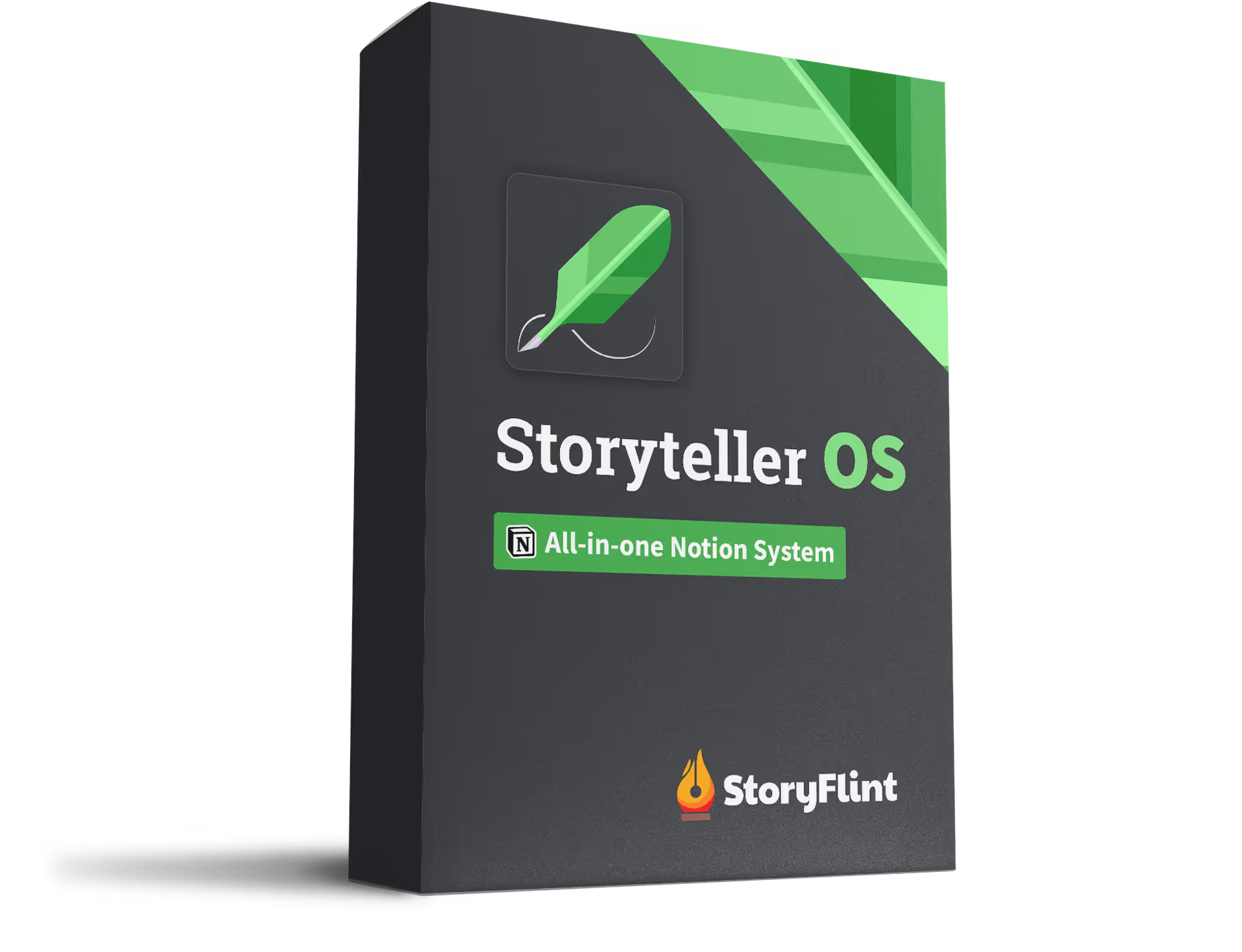Notion is a powerful tool for creating and managing data and documents. One of the most powerful features of Notion is its ability to create relations between different databases in your workspace. This can be a powerful way to keep everything organized and easy to find. In this article, you'll learn how to use Notion relations to connect different databases.
Database basics in Notion
A database in Notion is a collection of information that you can use to store and organize data. They're a great way to keep track of vast amounts of records and pages in your workspace.
How a Notion database is structured
Think of a database in Notion like a regular spreadsheet. Like a spreadsheet, it has columns and rows that store information.
- Rows in a Notion database are database items and can be individual Notion pages themselves.
- Columns are known as properties. They are what gives context to database items — dates, links, text, numbers, etc.

How can databases be used in Notion
Notion databases can be used for anything from tracking projects to keeping track of the articles and videos you find on the web.
Below is an example of different databases you can have for home cooking:
- Recipes
- Meats
- Cuisines

What is a relation in a Notion database?
A relation is a database property type that is used to connect one database to other databases. It's a powerful way to connect individual database items to others in two databases.
Let's take the earlier example of home cooking databases and connect them with relation properties.

Why would I use relations to connect databases?
Relation properties in Notion are great for making connections between disparate data. By adding relations, you can easily see how different database items are related to each other.
Connecting data allows you to make more informed conclusions by seeing the aggregate data in different ways.
For example, in the home cooking databases, you can see how different recipes are related to specific meats and cuisines. This can be helpful by:
- Seeing what recipes you can make with the meat you have.
- Seeing what recipes you have stored if you're wanting a particular cuisine.
- Seeing if you need to find more recipes for a particular meat or cuisine.
Relations are useful if you are using these kinds of databases
- A projects database using relations to a tasks database
- A customers database using relations to connect to a products database
- A tags database using relations to connect to an article database
How can I use relations to organize my story in Notion?
Relations are a great way to organize and connect different elements of your story together. You can create different databases for characters, scenes, chapters, locations, etc. and connect them together via relations.
Below are some examples of how StoryFlint has used relations in some Notion templates:
Ultimate Character Builder
StoryFlint's Ultimate Character Builder Notion template uses relations between its character list database and the various character attribute databases that help develop a character. These relations allow storytellers to easily see things like:
- What characters have similar personality types.
- What characters have personality traits that can conflict with or enable each other.
- If they're already using a specific archetype for one character to prevent using it on another character.
- What characters have shared values they can bond with.
World Building Bible
StoryFlint's World Building Bible Notion template uses relations between the different databases that store information about characters, locations, groups, historical events, etc. This allows storytellers to see things like:
- What characters are a part of a particular race or group.
- What historical events a certain location has experienced.
- What location a specific character comes from.
- What groups experienced a particular historical event.
- What characters are parents or children to other characters.
How to create a relation in a database
Creating relations between items in the different databases
1. Go to one of the databases you want to connect together and create a new property.
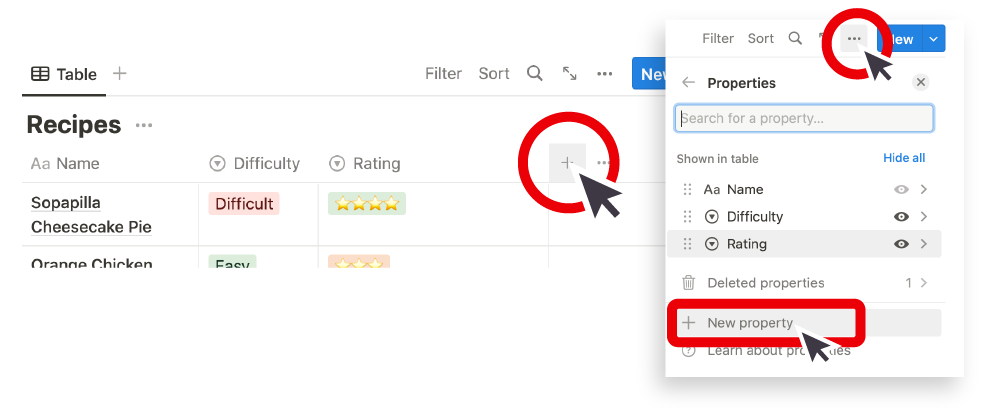
2. Select Relation from the list.

3. Search and select the other database you want to connect this first one to.
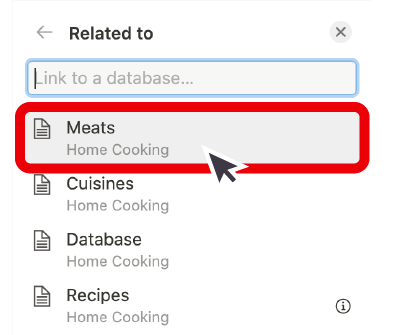
4. Give a name to this relation property.

5. Set a limit to the number of items it can relate to. (optional)
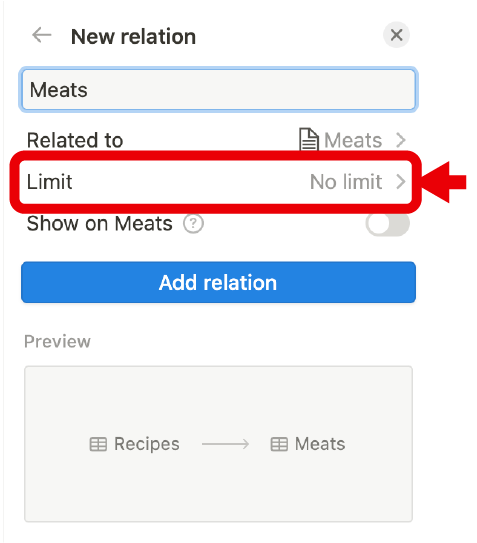
6. Toggle the switch to show or not show a connected relation property on the second database. In this example: the Meats database will have a connected relation property to the Recipes database that'll show all the Recipes each Meat database item is related to.

7. Click "Add relation"
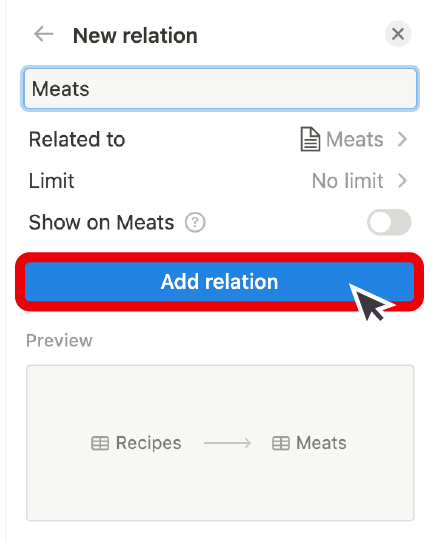
8. With the property now created, you can now click on it and link to and create related pages in the linked database. In this example: You can select Meats to relate to recipes and add new Meats to the Meats database from the relation property.

If you toggled the switch ON for showing the relation property on both linked databases, you can go to the second database and see the items related to in first database.
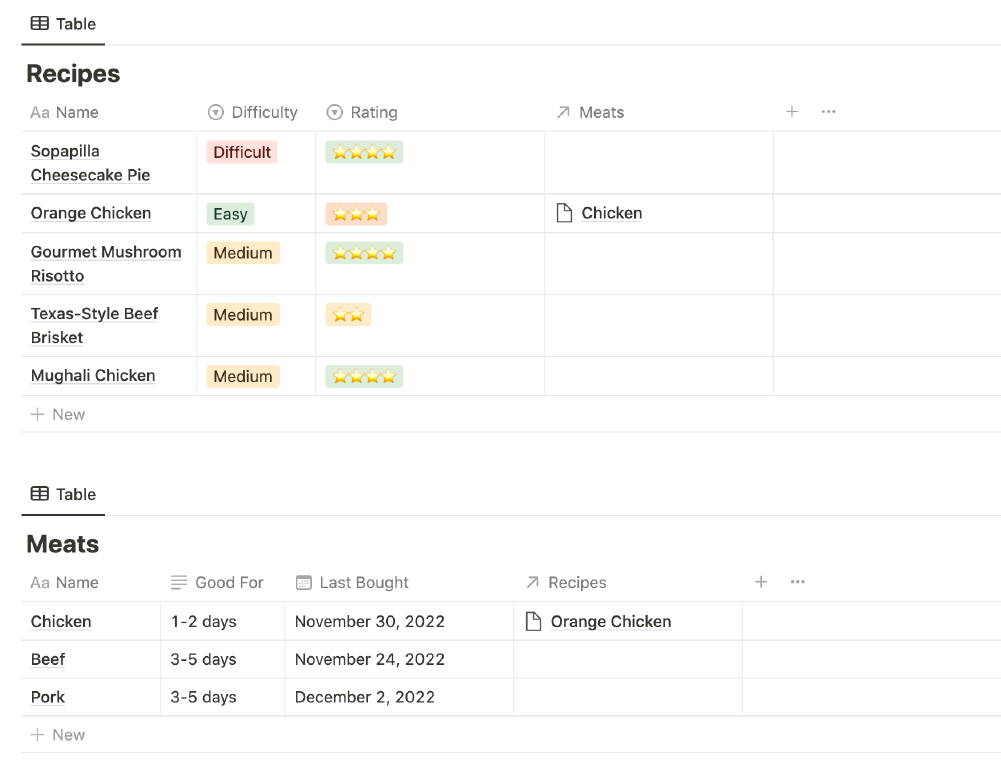
Relation properties in different databases change dynamically — make changes in one database, the relation property changes in the other database automatically.
{{medium-article-callout="/construction/components"}}
Creating relations between items in the same database
1. Go to the database you want to relate to itself and create a new property.

2. Select Relation from the list

3. Select the current database you're in.

4. Set a limit to the number of items it can relate to. (optional)
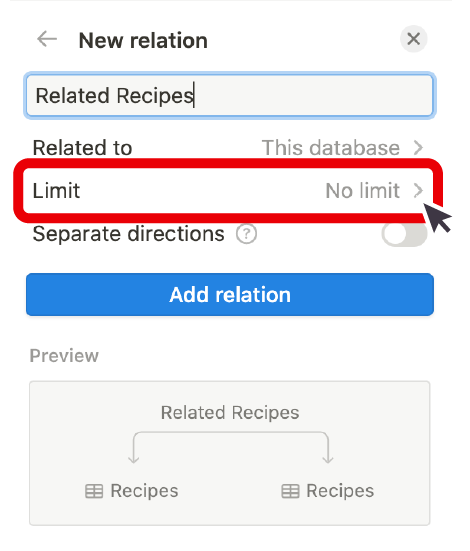
5. Toggle the switch to have the relation property as separate directions. If you turn this on, you'll actually create TWO separate properties in this database that can be used as a two-way relation (i.e. if you want to create parents and children relations or tasks and subtasks in a tasks database). Keep this switch off and it'll keep your relations in one property.

6. Click "Add relation"
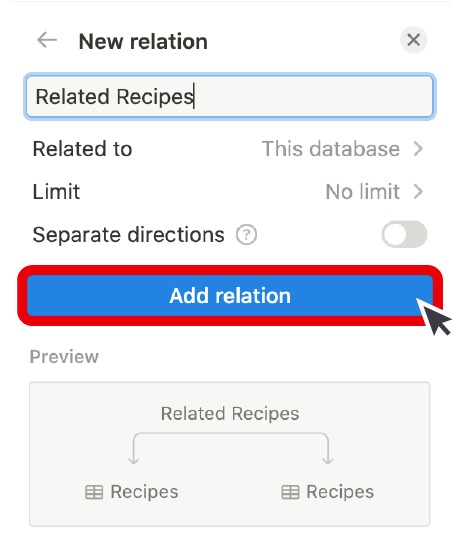
7. With the property now created, you can now click on the relation column to link to and create database items in the database.
What to do next with relations
Filters, Sorting, and Grouping
With relation properties set, you can filter, sort, and set grouping for your database based on said relations.
You can filter database items based on what relations they do or do not have.
You can sort your database in ascending or descending order by relations.
You can also group database items in a Table and Board view based on their relations.
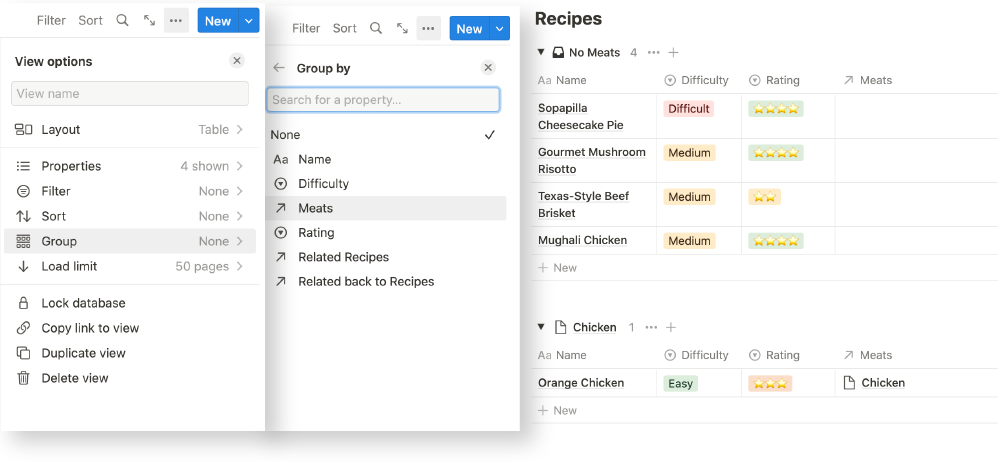
Different views
As mentioned before, you can set new views of your database with your relations in mind.
Create a Board view that's grouped by relations.
You can also sort and filter the different views of Table, List, Calendar, Timeline, and Gallery based on said relations.

Rollup properties
You can also use rollup properties to display information about the related items in your database.
Going back to the home cooking example–in the Recipes database, you can rollup the information about the related Meats for each recipe so you can see this information without having to go to the Meats database.
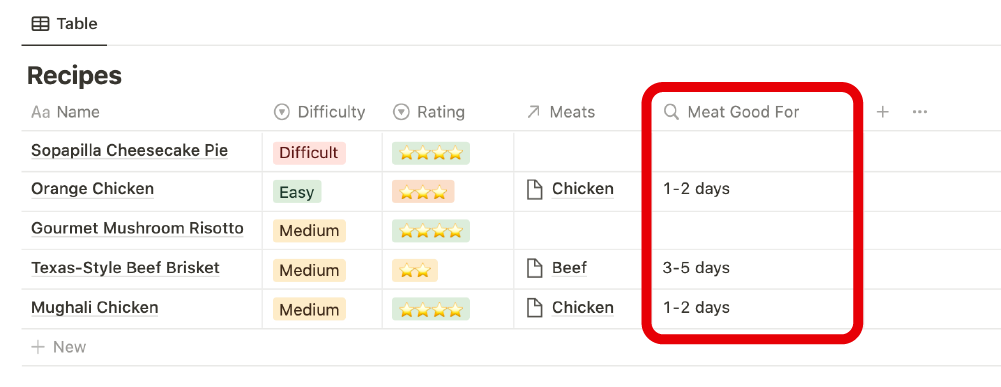
Conclusion
Notion relations are a powerful way to connect different pieces of information together. With some creativity, you can use them in a variety of ways to help organize and keep track of your data. Experiment and see what sorts of things you can come up with!




